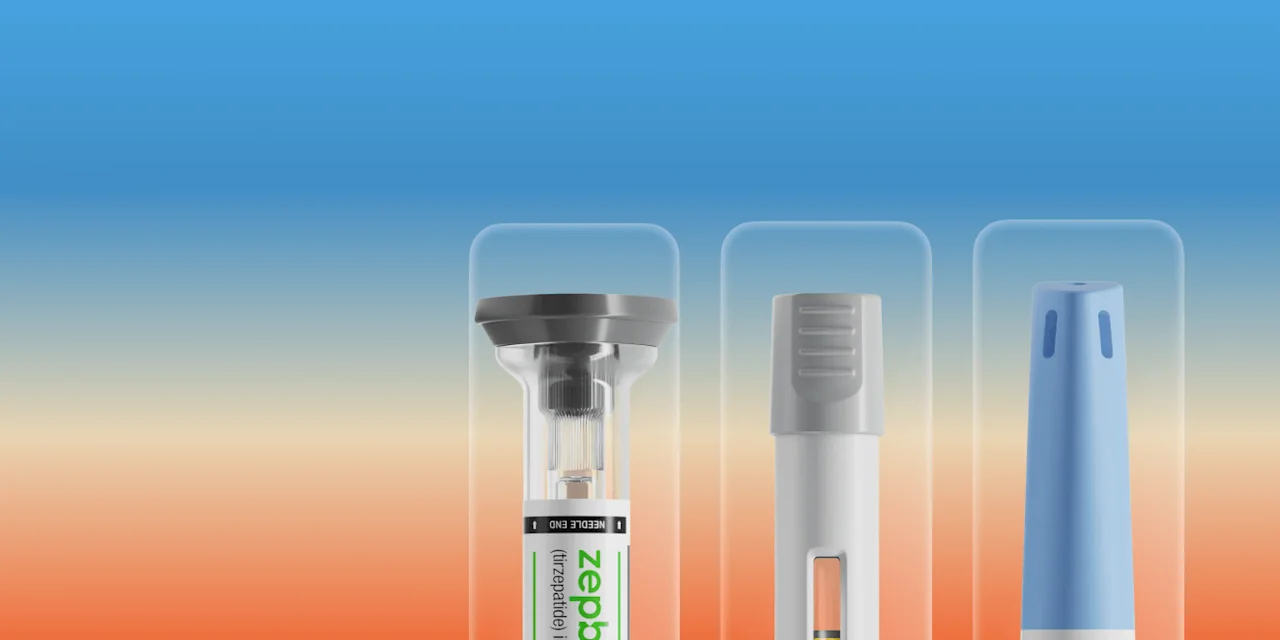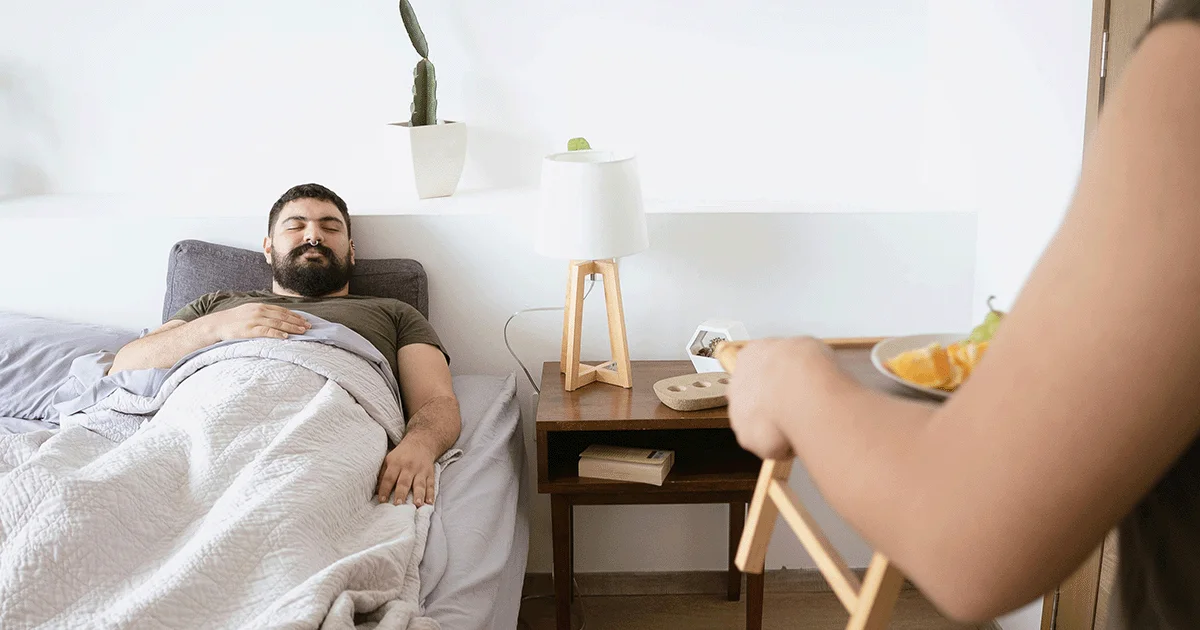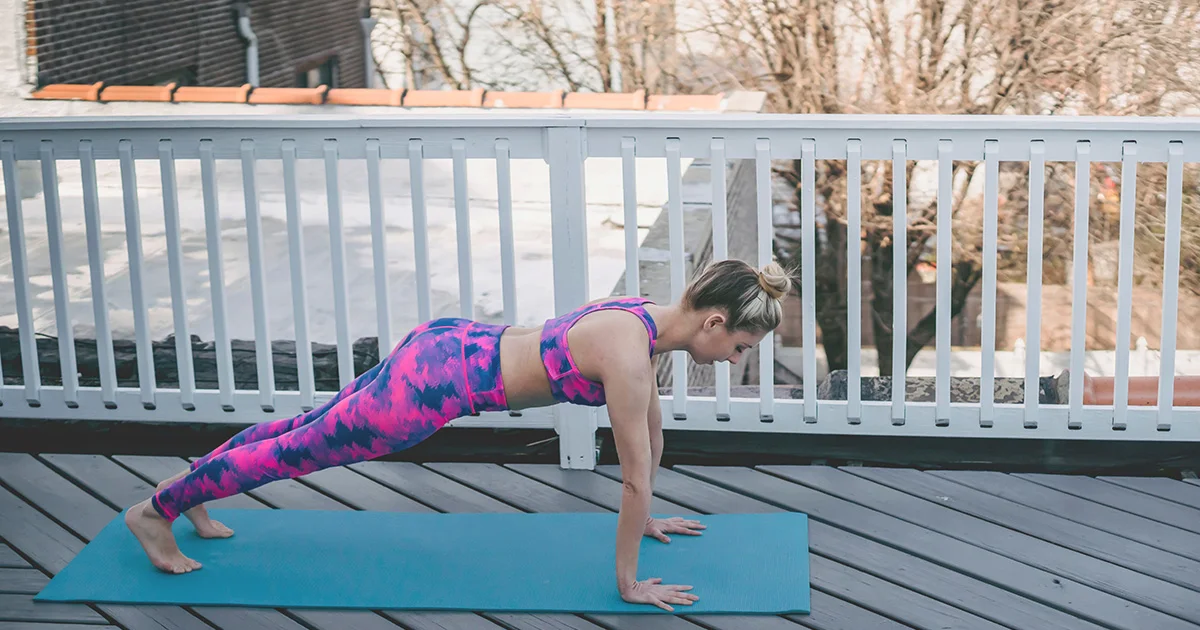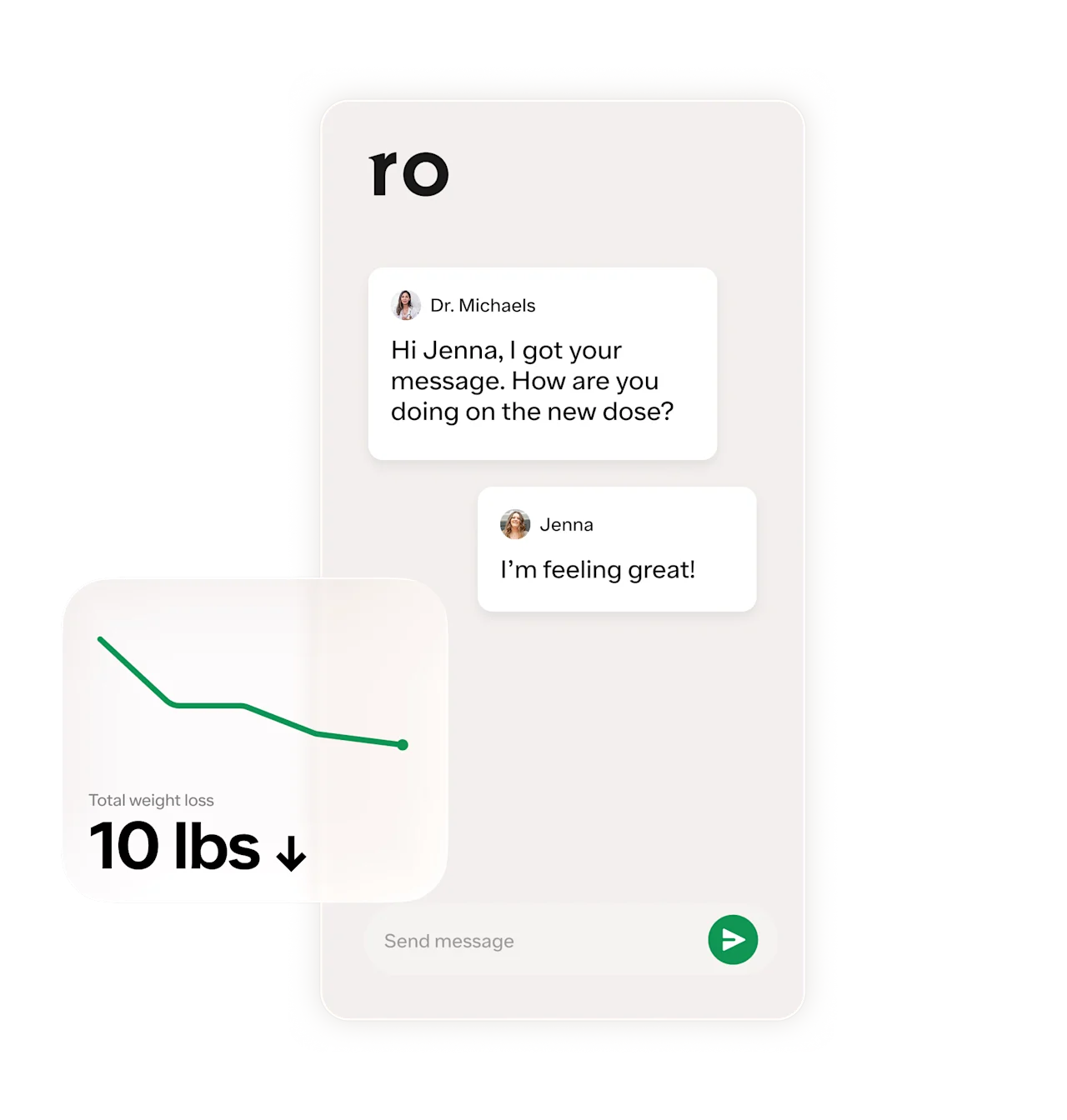Key takeaways
Learning how to inject tirzepatide can feel intimidating at first, but many people find the process soon becomes second nature.
You can inject tirzepatide just under the skin of your stomach, thigh, or upper arm.
There’s no “best” injection site for tirzepatide, but following the correct steps and injection technique helps ensure you receive the full dose.
Here's what we'll cover
Key takeaways
Learning how to inject tirzepatide can feel intimidating at first, but many people find the process soon becomes second nature.
You can inject tirzepatide just under the skin of your stomach, thigh, or upper arm.
There’s no “best” injection site for tirzepatide, but following the correct steps and injection technique helps ensure you receive the full dose.
The thought of giving yourself a shot might feel overwhelming at first, but it doesn’t have to be scary. If you’re wondering how to inject tirzepatide or where to start, you’re in the right place.
Tirzepatide, the active ingredient in Zepbound and Mounjaro, is a popular medication prescribed to help manage type 2 diabetes, sleep apnea, or support weight loss. Tirzepatide is injected just under the skin using either a prefilled pen or a vial and syringe.
This guide walks you through how to inject tirzepatide using either a pen or a vial and explains where to inject it for maximum effectiveness, plus tips to help you feel confident every step of the way.
How to inject tirzepatide using a pen
Prefilled Zepbound and Mounjaro pens offer a convenient way to inject tirzepatide. Each pen contains a single dose of tirzepatide and has a built-in needle, so there’s no need to handle the needle or even see it.
Here’s how to inject tirzepatide using a pen, according to the Zepbound pen instructions and the Mounjaro pen instructions provided by the drugs’ manufacturer, Eli Lilly.
Step 1: Gather your supplies and wash your hands
Choose a clean, well-lit location and gather everything you’ll need to inject tirzepatide:
One new tirzepatide pen (either Mounjaro or Zepbound, as prescribed by your healthcare provider)
Sharps container for proper disposal
Alcohol swabs
Clean cotton ball or gauze
Next, look at the pen to confirm you have the right medicine and dose. Check the expiration date to make sure it hasn’t expired. Inspect the medicine; you should see a clear to slightly yellow solution. Air bubbles are normal, but you shouldn’t use tirzepatide if it appears cloudy or has any particles in it. If anything looks off or if the pen is damaged, don’t use it. Contact your pharmacy for a replacement.
Tip: You can inject tirzepatide right out of the fridge, but cold medication can sting more during injection. The injection may be more comfortable if you let the medication come to room temperature first by letting it sit out of the refrigerator. Zepbound and Mounjaro pens stay good at room temperature (up to 86°F or 30°C) for up to 21 days.
After you assemble your supplies, wash your hands with soap and water for about a minute. Then dry them with a clean towel. Clean hands help lower the chance of infection during injections.
Step 2: Choose your injection site
Next, you’ll choose where to inject tirzepatide. Mounjaro and Zepbound are given as subcutaneous injections. This means the medication gets delivered just under your skin, into the layer of fatty tissue as opposed to deep into the muscle.
The recommended injection sites for where to inject tirzepatide are your stomach, outer thigh, or the back of your upper arm (if someone else is helping). Choose a new spot each week to give your skin time to recover and help the medication absorb properly.
It is recommended to prepare the injection site by cleaning the skin with an alcohol swab. To do this, swipe the area once using a circular motion, then let it air dry. This is a common practice to help disinfect the skin before administering injectable medications.
Step 3: Remove the cap and position the pen
Remove the cap by pulling it straight off without twisting it. Don’t put the base cap back on, as doing so could damage the needle.
Next, place the clear base of the pen flat against your skin at the injection site at a 90-degree angle. Unlock the pen by turning the ring until it’s lined up with the green padlock symbol.
Step 4: Inject the dose
Once the pen is in place, press and hold the injection button to inject your dose. Keep steady pressure on the pen and hold it against your skin for at least 10 seconds to make sure the full dose is delivered.
During the tirzepatide injection, you may hear or feel two clicks. The first click is your signal that the injection has begun, and the second (usually louder) click means the injection is complete. Sometimes, you may hear an extra soft click before the louder second click, which is normal. Always wait until you hear the second loud click, then hold the pen in place for a few more seconds. To make sure your full dose was delivered, check if the gray plunger is visible. Seeing this confirms you got the full dose.
Step 5: Dispose of the used pen
When you're done, gently lift the pen away and dispose of it right away. Place the used pen into a sharps container. Don’t throw it in your household trash or recycling bin. You can get a sharps container cleared by the US Food and Drug Administration (FDA) from a pharmacy or use a heavy-duty plastic container with a tight-fitting lid.
It’s common to see a drop of blood on your skin after your tirzepatide injection. Just apply gentle pressure with a clean gauze pad or cotton ball. Don’t rub it. If needed, you can place a bandage over the area.
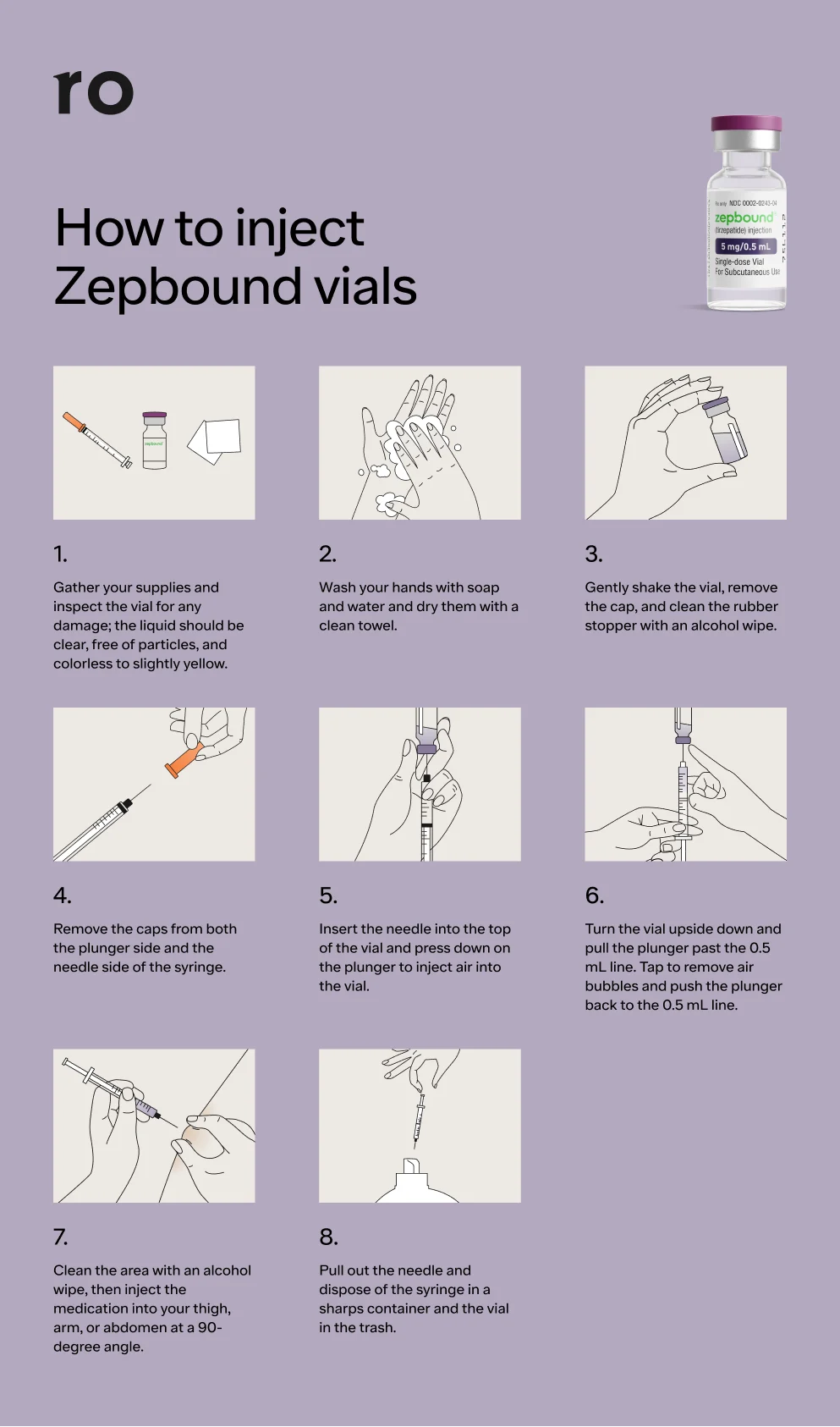
How to inject tirzepatide using a vial
Here’s how to inject tirzepatide using a vial and syringe, according to Lilly's instructions for Zepbound single-dose vials.
Step 1–3: Repeat steps 1–3 above
As with the tirzepatide pen, you’ll start by gathering your supplies, washing your hands, and choosing an injection site. The supplies you’ll need include:
One new tirzepatide vial (as prescribed by your healthcare provider)
One syringe and one needle (some syringes come with an attached needle)
Sharps container for proper disposal
Alcohol swabs
Clean cotton ball or gauze
Be sure to use a new syringe and a new needle for each tirzepatide injection. Do not share needles or syringes with other people; sharing needles or syringes can spread serious infections.
Step 4: Prepare the vial and syringe
Remove the vial’s plastic cap and clean the top of the rubber stopper with an alcohol swab. Do not remove the rubber stopper.
Unwrap the syringe and needle. Put the needle on the syringe and turn it until it’s tight. If your syringe has a pre-attached needle, you should still turn the capped needle to make sure it’s firmly attached. Then pull the needle shield straight off.
With the needle pointing up, pull the syringe plunger back to draw in air equal to the volume of your prescribed dose (e.g. 0.5 mL).
Insert the needle into the vial and push the air in. Then turn the vial upside down.
Slowly pull back the plunger to draw your dose of medication.
If you notice any air bubbles, gently tap the syringe to move the bubbles to the top, then gently push the plunger to expel the air. Adjust the plunger so the tip lines up exactly with your dose, then pull the syringe out of the vial.
Step 5: Inject your dose
Insert the needle into the skin at a 90-degree angle. Your healthcare provider will let you know if you should pinch the skin before injecting.
Once the needle is under your skin, push the plunger down to inject your dose. Keep the needle in place for at least five seconds to make sure you get the full dose.
Step 6: Safely dispose of supplies
Put the used syringe and vial in your sharps container right away. Don’t reuse any syringes or needles. Doing so could lead to infection or other unwanted effects.
Tirzepatide injection sites: where to inject tirzepatide
Tirzepatide is given as a once-weekly subcutaneous injection (often abbreviated sub-Q, SQ, or SC). The medication gets delivered into the fatty layer of tissue just under your skin. The best injection sites for tirzepatide injections are, in no particular order, the stomach, thigh, or upper arm. More specifically:
Abdomen. Aim for the area below your ribs and above your hip bones, at least two inches away from your belly button. Many people prefer the abdomen because it’s easy to see and reach—simply move your clothing out of the way. Also, some research suggests that subcutaneous injections in the abdomen may be less painful than in the thigh.
Thigh. Inject into the front or outer area of your thigh. Don’t inject the inner thigh.
Upper arm. If someone else is administering your tirzepatide injection, they can inject it into the fleshy area on the back of your upper arm. This area isn’t recommended for self-injection because it’s difficult to reach and see while using proper technique.
Rotating your tirzepatide injection site each week helps keep your skin healthy and the medication working as it should. It’s fine to use the same general area of your body, but aim for a slightly different spot each time.
Switching up your injection site lowers the chance of developing skin changes such as pitting, lumps, or thickened areas — a condition called lipodystrophy. If this happens, it can affect how well your medication is absorbed, so rotating your injection site is an easy way to help your treatment work as intended. Also, avoid injecting into areas that are already scarred, bruised, tender, or irritated.
How often should you rotate tirzepatide injection sites?
No matter which spot you pick, rotate your injection site each week. You can use the same general area, but aim for a slightly different spot each time. This helps protect your skin and ensures the medication absorbs properly.
Where is the best place to inject tirzepatide?
The best place to inject tirzepatide is one of the three recommended injection sites:
Abdomen
Front, outer thigh
Upper arm (if someone is helping you)
If you’re self-injecting, it’s best to choose your stomach (at least 2 inches away from your belly button) or the front part of your outer thigh. Many people find the abdomen more convenient and less painful than the thigh, but this can vary. If someone else is giving your tirzepatide injection, they can inject it into these areas or the soft area on the back of your upper arm.
Overall, the best injection site for tirzepatide is the one you can use confidently and consistently. That said, no matter which area you choose, be sure to rotate your injection sites each week to help prevent irritation and to keep your medication working as effectively as possible.
Do tirzepatide injections hurt?
Tirzepatide injections cause minimal (if any) discomfort for most people. The needles are short and thin and designed for subcutaneous injections, which don’t go deep into the muscle. Instead, the needle only reaches as far as the fatty layer of tissue just under your skin.
Still, some people might experience some discomfort, such as pain, bruising, redness, or temporary irritation at the injection site immediately after injection. These side effects are usually mild and generally resolve on their own within a few hours or days.

How to make sure you get your full tirzepatide dose
Until you get the hang of giving yourself tirzepatide injections, it’s common to feel uncertain. You may be wondering how to know if you’ve injected tirzepatide correctly.
If you use a tirzepatide pen (such as Mounjaro or Zepbound pens):
Be sure to hold the pen firmly against your skin and press the injection button.
Keep it in place for at least 10 seconds without moving it. You’ll usually hear two clicks — the first when the dose begins and the second when it’s done.
To confirm you got the full dose, look for the gray plunger at the end of the pen. If you see the gray plunger, you know you’ve injected the entire dose.
If you use a tirzepatide vial and syringe (such as Zepbound vials):
Follow your healthcare provider’s instructions and make sure you’re drawing the full dose into the syringe.
Keep the needle in place for 5–10 seconds before removing it to ensure the full dose is delivered.
Watch for the plunger to reach the end of the barrel — this means the medication has been fully injected.
If you're still unsure whether you got the entire dose or if you have questions about how to inject tirzepatide correctly, check in with your pharmacist or healthcare provider. If you think your tirzepatide pen is malfunctioning or defective, you can also contact the manufacturer at 1-800-Lilly-Rx (1-800-545-5979).
Bottom line
Starting an injectable medication like tirzepatide can feel a bit intimidating, especially if you’ve never given yourself a shot before. But don’t worry — most people get the hang of it quickly, and it easily becomes a manageable part of their weekly routine.
Pen or vial options: Tirzepatide comes in two forms—a prefilled pen with a built-in needle, or a vial that’s given with a separate syringe and needle. Follow your prescriber’s instructions for the specific product you use.
Injection sites: The stomach, thigh, and upper arm are all approved injection sites for tirzepatide. Choose the one that’s easiest for you, and rotate spots weekly to avoid irritation.
Reach out to a healthcare professional: If you have questions about injecting tirzepatide or run into issues, don’t hesitate to reach out to a healthcare provider or pharmacist. They can walk you through the steps and help troubleshoot any problems.
Frequently asked questions (FAQs)
Where is the most effective place to inject tirzepatide?
All three recommended injection sites—the stomach, thigh, and upper arm—are considered equally effective. No matter which of these sites you pick, the medication gets absorbed into your system and starts working, as long as you use proper technique and follow your prescriber’s dosage instructions.
Where should you inject Mounjaro for best results?
Mounjaro, a brand-name tirzepatide injection, works best when it’s injected into the abdomen, outer thigh, or upper arm, specifically into the fatty layer just under your skin. The stomach is a popular choice for self-injection, but the outer thigh and back of the upper arm (with help) are equally effective options. It is recommended to rotate injection sites as well for best results.
Can I inject tirzepatide on the inner thigh?
No, the inner thigh isn’t recommended for tirzepatide injections. Stick with the outer or front part of your upper thigh. This is one of the three areas proven to reach effective levels of tirzepatide absorption after subcutaneous administration, which helps the medication work the way it’s designed.
Can you inject Mounjaro incorrectly?
It’s possible to inject Mounjaro incorrectly if the steps aren’t followed properly. Avoid injecting into skin that’s thickened, scarred, bruised, or irritated. Also, don’t mix tirzepatide with any other medication or inject it in the same spot where you’ve recently injected another drug, such as insulin.
Where is tirzepatide best absorbed?
No matter which of the three recommended injection sites you choose for your tirzepatide injection—stomach, thigh, or upper arm—the medication will work the same. Tirzepatide gets absorbed into the body equally and effectively from all of these injection sites, as long as you follow the recommended instructions and injection technique.
DISCLAIMER
If you have any medical questions or concerns, please talk to your healthcare provider. The articles on Health Guide are underpinned by peer-reviewed research and information drawn from medical societies and governmental agencies. However, they are not a substitute for professional medical advice, diagnosis, or treatment.
Zepbound Important Safety Information: Read more about serious warnings and safety info.
Mounjaro Important Safety Information: Read more about serious warnings and safety info.
References
Becton, Dickinson and Company. (2024). Principles of injection technique. Retrieved from https://www.bd.com/content/dam/bd-assets/na/medication-delivery-solutions/documents/in-service-material/BD-2125_Principles_of_Injection_Technique.pdf
Eli Lilly-a. (2024). Mounjaro Pen - Instructions for Use. Retrieved from https://uspl.lilly.com/mounjaro/mounjaro.html#ug0
Eli Lilly-b. (2024). Zepbound Pen - Instructions for Use. Retrieved from https://uspl.lilly.com/zepbound/zepbound.html#ug
Eli Lilly-c. (2024). Zepbound Vial - Instructions for Use. Retrieved from https://uspl.lilly.com/zepbound/zepbound.html?s=ug1
Kim, J. & De Jesus, O. (2023). Medication Routes of Administration. StatPearls. Retrieved from https://www.ncbi.nlm.nih.gov/books/NBK568677/
MedlinePlus. (2023). Subcutaneous (SQ) injections. Retrieved from https://medlineplus.gov/ency/patientinstructions/000430.htm
U.S. Food and Drug Administration (FDA). (2024). Mounjaro (tirzepatide) Injection, for subcutaneous use. Retrieved from https://www.accessdata.fda.gov/drugsatfda_docs/label/2024/215866s010s015s022lbl.pdf
U.S. Food and Drug Administration (FDA). (2021). Sharps Disposal Containers. Retrieved from https://www.fda.gov/medical-devices/safely-using-sharps-needles-and-syringes-home-work-and-travel/sharps-disposal-containers
U.S. Food and Drug Administration (FDA). (2025). Zepbound (tirzepatide) Injection, for subcutaneous use. Retrieved from https://www.accessdata.fda.gov/drugsatfda_docs/label/2025/217806Orig1s020lbl.pdf
Usach, I., Martinez, R., Festini, T., et al. (2019). Subcutaneous Injection of Drugs: Literature Review of Factors Influencing Pain Sensation at the Injection Site. Advances in Therapy, 36(11), 2986–2996. doi: 10.1007/s12325-019-01101-6 Retrieved from https://pmc.ncbi.nlm.nih.gov/articles/PMC6822791/



